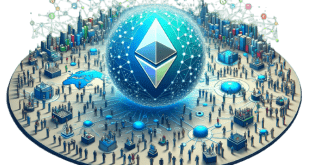Over the past few years, and with the rapid rise in tech adoption in entertainment and film making process, Animation as has grown widely. From being used sparsely and only in sci-fi or select genre of movies and non-entertainment formats, it is now found place in wider areas, from full-fledged movies and series to application in business and education. The animation industry has grown at an exponential rate, from scriptwriting to post-production and hits on video streaming sites. As a result, there has also been a steady rise in the demand for good animation professionals to keep pace with the growing opportunities.
In terms of entertainment alone, an animator can find diverse range of growth opportunities. An animation job can be defined as the art of bringing a character or an item to life. It is focused with the design, drawing, layout, and production of graphically rich and appealing multimedia clips. It is a fusion of the entertainment business with technology. Today, for anyone with a creative bend and a passion for breathing life into static art, animation may be a lucrative option, unlike a few decades ago when fine artists were generally doomed to live a life of meagre salaries and very limited employment options.
Animation as a career path is one in which you can have fun while working. A talent for sketching and drawing, as well as a strong interest in computers, is always considered necessary for admission into the animation profession. Patience, hard labour, and attention to your task are also required for this position. Explore the realm of creativity by diving into this business with these skills.
The once-dominant Western animation industry has found a new home in India. India, more than any other Asian country, has the ability and creative energy to generate world-class animations. Although the animation business is still in its infancy in India, it is poised for a time of extraordinary growth. Animations and special effects are in high demand in the television, film, and advertising industries. Furthermore, India, with its rich cultural past and mythology, as well as technological know-how, is prepared to generate full-length animation films and short animation features. This surge, however, would not be limited to the animation business, but would also affect the mobile and computer gaming industries. The Indian animation business is growing. Western animation firms assist India or outsource animation because of India’s strong foundation in English communication, low costs, and excellent infrastructure of state-of-the-art facilities.
Let us concentrate on the available and lucrative career opportunities for Animation artists:
Art Director: Based on the copywriter’s instructions, an art director will offer visual ideas to the client. They also work together on various designs to develop effective ad campaigns.
Story Broad Artist: As storyboard artists, people with strong drawing talents are engaged to visualize a chain of events from one scene to the next.
Modeller: A person who is well-versed in form, volume, and anatomy. They create animation models.
Character Animator: Character animators move the characters in a 2D or 3D animated setting. The most significant aspect of animation is this. They bring characters to life and are generally familiar with traditional and stop-motion animation.
Key frame animator: The primary responsibility is to draw images of the beginning and end of a movement.
In-between animator: This is a position for beginners in the animation industry where you can learn practically all of the fundamentals of animation.
Clean- up Artist: The animator’s assistant is responsible for tracing the animator’s preliminary drawing and ensuring the precision and consistency of a design.
Layout artist: Person in charge of deciding on lighting and camera angles, as well as sketching the background design for the animation.
Background artist:The task is to establish the particular colour palette, mood or style of a particular scene.
Compositor: The task is to combine all of the different characters and backdrops into a single animation frame.
CGI Supervisor: These visual effects specialists assist compositors in creating a unified image by mixing animation materials such as live-action film, visual effects, and computer-generated images (CGI). The goal is to improve the watching experience.
Texture Artist: They add a surface to the 3-D character, object, or environment.
Rigging artist: Set up a skeletal system or joints for the modelled, textured 3-D figure or item; this allows the 3-D character to speak or move fluently and appropriately.
Lighting Technician: These designers contribute to the realistic aesthetic of films, video games, and other types of multimedia. They enhance animated environments with light and shadow.
Rendering artist: Combine models, textures, animation, and lighting to create the correct blend in the form of individual animation frames.
Though cinema and television entertainment is the primary area for people seeking a fruitful career in animation, there is also good scope in other fields such as business, sales, engineering, education (e-learning), and advertising, video gaming and print media and publishing companies.Training is the most crucial factor in developing a skilled expert in the field of animation. There are numerous courses available to assist students learn the technical abilities needed to seek a prosperous career in this exciting and dynamic profession.
BY: (Hansa Mondal, COO, Ssoftoons)
 Newspatrolling.com News cum Content Syndication Portal Online
Newspatrolling.com News cum Content Syndication Portal Online






